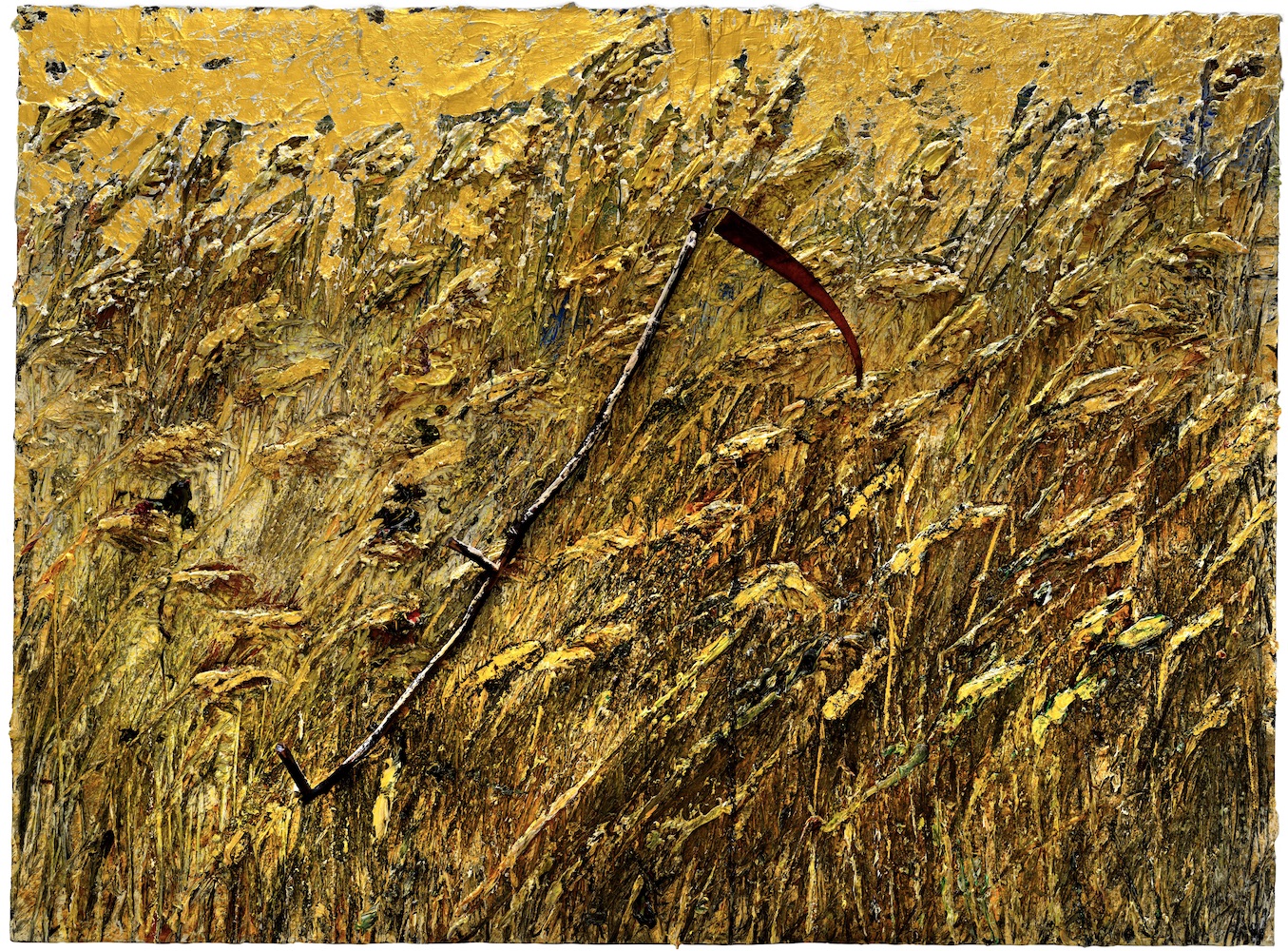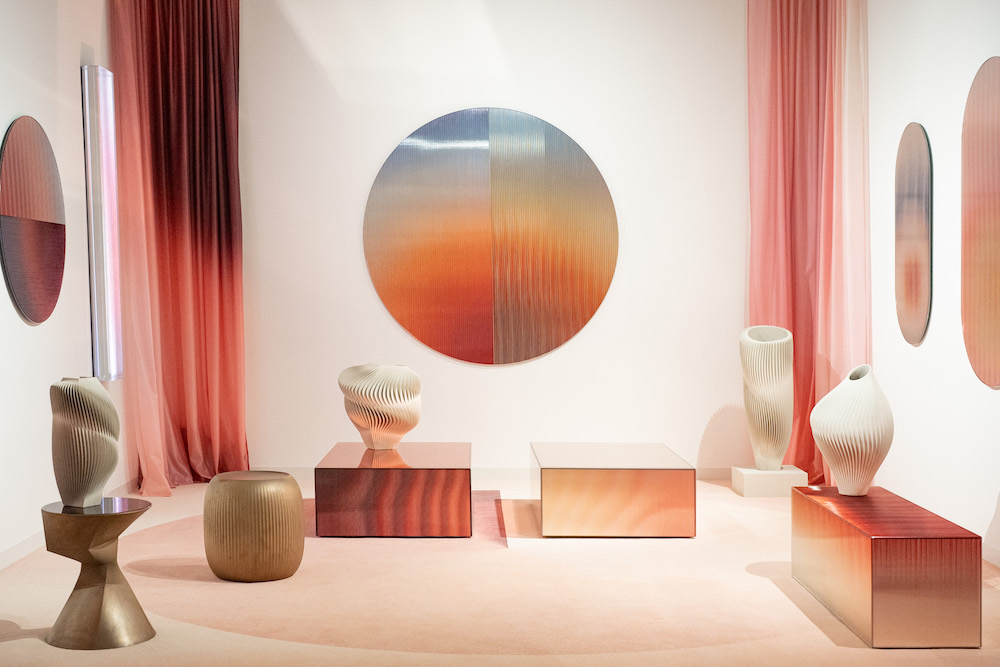This week in Miami is shaping up to be all about Peter Marino. He’s been awarded the first Design Visionary Award from Design Miami/ and he has a solo exhibition at the Bass Museum, “One Way,” that opens to the public tomorrow, December 3. He’s also on the cover Whitewall’s winter 2015 Luxury Issue, out this week. Here’s a look at our interview with him for the magazine.
*******
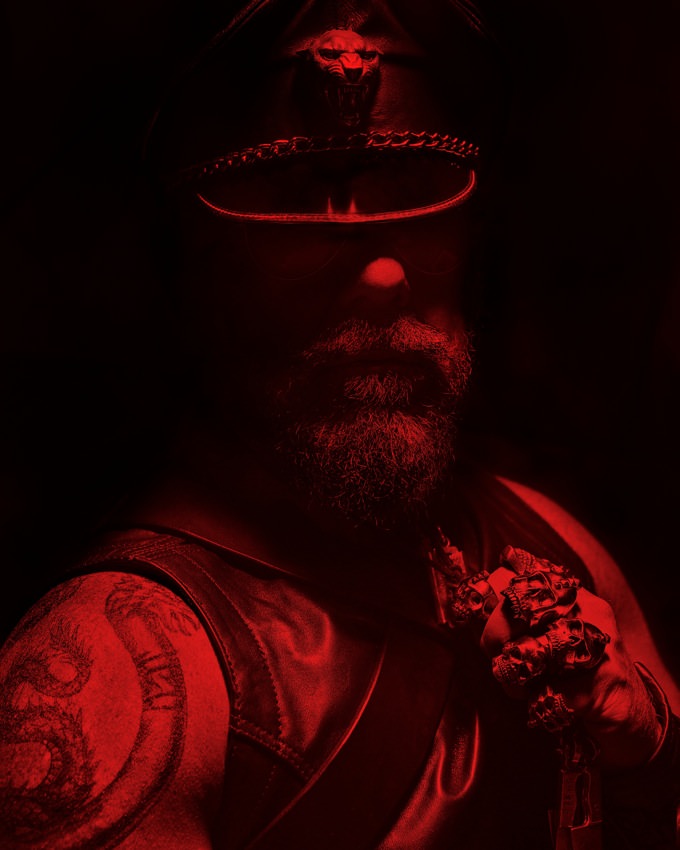
Portrait by Jesse Shadoan
Peter Marino
By Katy Donoghue
Portraits by Jesse Shadoan
A Kiefer, a Warhol, and a Houseago were all less than ten feet away from where we sat waiting to interview Peter Marino at his office in New York (we might have Snapchatted a selfie behind the Houseago from excitement). Whitewall previously spoke to the architect for our spring 2010 cover story, highlighting his collection of contemporary art, antiques, and bronzes that fills his multifloor office in midtown Manhattan, in addition to his work for basically the A to Z of luxury brands.

Farhad Moshiri
This time around we were there to speak about his upcoming exhibition at the Bass Museum in Miami Beach, “One Way.” It will be the first exhibition about the leather-clad designer, architect, and collector, and is curated by Jérôme Sans. We also learned that it would mark a first for us: Whitewall will be displayed along with other publications that have put Marino on their cover. The show opens during the Miami fairs, when Marino will also be honored with the Design Visionary award from Design Miami/, which will involve a presentation of his collection of chairs and his own bronze boxes displayed in a—what else?—black leather booth.
Moving from behind the Houseago, we sat down with Marino to talk about his Miami takeover and why he went from collecting bronzes to creating them.
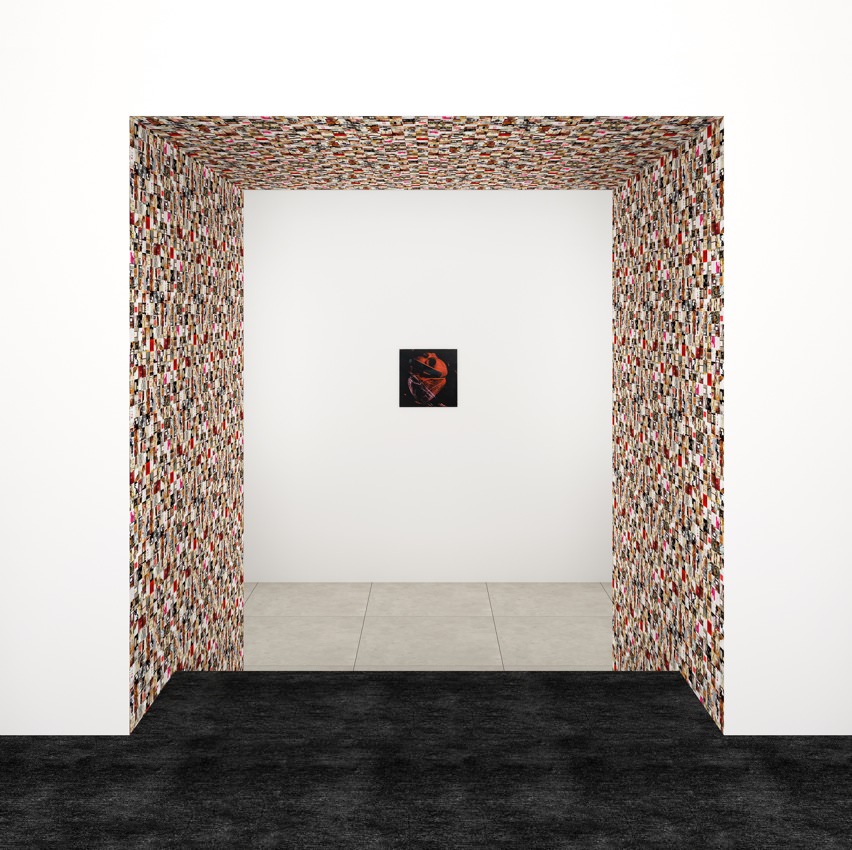
Paradise (Maquette)
WHITEWALL: It’s going to be all about Peter Marino this year in Miami! You have a solo show at the Bass Museum and were named a Design Visionary by Design Miami/. For the design fair, did they commission you to create an installation?
PM: Yes. I thought that maybe, if I made a black leather booth, people would know it was me.
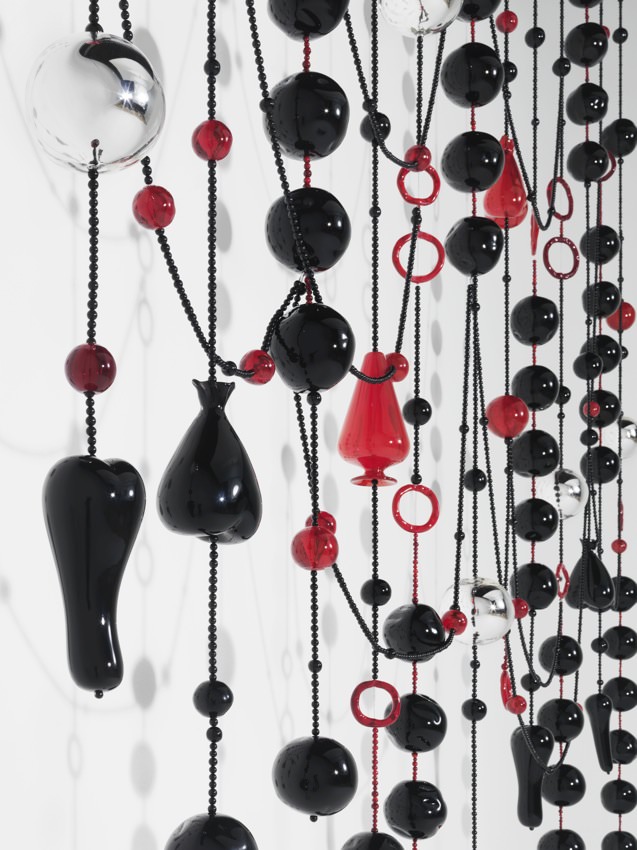
2014
WW: Of course! [Laughter]
PM: I asked, “Why are you giving me this award?” and they said, “You’re the only one who takes interiors, furniture, and everything as seriously as outside. So therefore we’re showing architecture, we’re showing bronze boxes, we’re showing my collection of chairs, and then there’s a wax dummy of me. We have this Japanese artist making this wax, like Tussauds museum model.
WW: Wow, is it like a 3D scanner kind of thing?
PM: Oh, no. It’s creepy—they put straws in your nose and they make a body cast. For the arms, he sat there painting to get my right arm color, then he took a measuring as to how many hairs I have per inch. It’s scary. So you think if I do that they’ll know it’s me?
WW: Yes. [Laughs] So how did the Bass Museum show come about, and how did you work with Jérôme Sans on that?
PM: Well, do you want the truth or the PR story?
WW: The truth!
PM: Some of the board of directors people came here with the head of the museum and looked around. I have art everywhere. I mean, the smallest draftsmanhas paintings at his desk. They said if they could walk through your office that would be the coolest thing, but they can’t. So I’m loaning them over 136 works of art, tons of architecture projects, I’m showing two of the towers I did for Chanel . . .
I’ll give you the skivvy. I think the point of the show is to show that my involvement with art, art and me are very connected. I bought a Richard Deacon sculpture; two years later I built this building in Singapore and I commissioned him to do a major sculpture in it, and that inspired me to do this a building in Los Angeles. You see, so I’m trying to show the full circle of art. I commission it, and then [I make a building inspired by it] . . . so the art and architecture is very interlocked.
WW: And you commissioned a few artists for the show itself.
PM: Yes, because they said, “Peter, every building you do you commission art and that is very original. Would you consider commissioning for the museum show?” So I did. I commissioned five works of art. The outside corner of the museum [will have a commissioned work] that is 28 feet high by Gregor Hildebrandt. It’s made of film footage of me, and it’ll be just blowing in the breeze. It’s black filaments, very dark and beautiful. I commissioned the first archway by Guy Limone.It’s 2,200 photos of all my work from 32 years, and you walk through this commissioned archway, and the first work of art I show is Andy Warhol. Then in the Chanel room, we commissioned a huge wall by Jean-Michel Othoniel called Black Rosary. Then in the Pop Art room, which is being underwritten generously by Gagosian Gallery, where I’ve got all my Damien Hirsts and Warhols, I commissioned Farhad Moshiri to write a word . . . and I always had a bit of a fetish for knives, so he’s writing “paradise” in black and white knives, which I think is heaven. And then the last thing you see when you leave the show is the final commission. I wanted a portrait done by ErwinWurm. I was a little nervous. I don’t know if you’ve seen his portraits that he does, but he really makes people grotesque, like he makes men like me look pregnant or like they swallowed an elephant, so I was a little nervous.
I said, “Erwin, I’m just going to be really frank with you. If this one is really ugly I ain’t usin’ it.” [Laughs] So we were having dinner, and he said, “Give me your hat, give me your coat,” and when you leave the show, you’ll see this portrait ofme, Peter Marino in 100 Years [a skeleton leaning against the wall wearing the hat and coat].
WW: Well, he didn’t make you fat, that’s for sure.
PM: [Laughs]
WW: In describing your work with private clients, you’ve said that you’ve always seen their interiors as sort of portraits of themselves. So this exhibition is a portrait of you. Was it strange to have the tables turned like that?
PM: Well, no, because I’ve done houses for myself. When you’re your own client, you’re working with the economic limitations you’ve got. I’m not like my clients. It’s not like I’m doing clothing where I can build myself a suit. I have to build myself a fucking house on my budget; think about what I’m saying. The house I built for myself in the mountains is only three materials: cedar, stone—which is slate—and stucco.
WW: How did you choose what art would go there, to compete with those mountain views? Or do you rotate your collection between homes?
PM: No, it was specifically done—I have 13 beautiful Kiefers. Anselm calls this the Kiefer museum. [Laughter]
WW: I think it’s funny that you were asking if I think people will recognize the Design Miami/ commission as you, because I think your strong suit is that you don’t really have a signature motif in your architecture. You aren’t a one-trick pony. Do you think you likewise collect artists whose works show range?
PM: I will say that I do think less of an artist who changes nothing over his entire career. I mean, yes, I think a natural progression for an artist is more à la Picasso; you know, you have your pink period, your blue period, you have your Cubist period. Creative people who do one thing for their entire life I find not creative. I find that obsessive-compulsive and there’s a difference. Architects can certainly do the same thing, or maybe they’re perhaps not as creative. Economically, it certainly works better for them. You can hire them for their look. I don’t mind ’cause I have a very short attention span and loathe to do the same thing twice. I don’t even like getting out of my chair the same way again, so like I’m certainly not going to do two buildings that look alike. What’s funny is that the last five years I’ve really been in my stride.
WW: Right, the last time Whitewall spoke with you was about five years ago, and I remember when we talked you had mentioned how much the economic crash had put your projects on hold.
PM: Yeah, it was terrible; 2008 was the worst. We had three huge hotel projects that we had hired all canceled within 30 days—one in Abu Dhabi, one in Croatia, and one in Morocco. And they were huge; they were not just hotels, but they were hotels with associated condominiums, and I thought that was the wave of the future. Well, it wasn’t. We went back to doing our private homes, which got better and better, and we finished some real beauties.
WW: Is there a location you’d still like to do a project in?
PM: Location I haven’t thought [about] too much—that’s an interesting question. I guess there’s some location I’d love to work in, but, no, I don’t have thoughts like that. You know, when you’re an architect you have your portfolio under your arm when you go to interviews, and it’s taken 32 years so that I don’t have to go around with my portfolio under my arm. It really feels good.
WW: You went to architecture school, and you’ve said that at first you wanted to be an artist. What made you want to be an artist?
PM: My dad was an engineer. I had a very strong arts background in high school. I would always draw, always paint, and I was always good at it. I had a good set of eyes, not to sound hubris, but I had a good set of eyes. My daughter actually has a great nose—she’s a sommelier, so she can smell and I can’t. [Laughs] So I came into architecture from fine arts, which I keep stressing is very different ’cause most guys would come in for engineering, and it shows.
I had to transfer from painting to architecture because I needed a job. And funny enough, my very first [position] I worked for Skidmore, Owings & Merrill and then afterward I went to George Nelson for the next two years. The funny thing is I tell people I got hired because I had a big art portfolio, and they went, “Whoa, okay, you should work on this team, and you pick the colors and he materials and everything.” It was really interesting because from that day on I understood that architects design things in black and white in their heads, and then they pick the materials for what things should be after. I do the opposite—I start with the colors and the materials to see what it feels like. I don’t abstractly draw something and then go, “Gee, I wonder what I’ll make this out of.” So I have a physical touch and a different sense to my approach.
WW: Something you’ve recently created for interiors are your bronze boxes. Tell me about how that series started?
PM: Well, that’s me just because I love bronze, I love everything about bronze. I had this kind of fear because all of an architect’s work, you want to think it’ll last your entire lifetime. Well, it’s not. We built this great house in Palm Beach, and the owner sold it, and it was the best house I ever did, never thought they would sell it, and they sold it, and it got all changed around, and it sort of broke my heart. And I did Barney’s in 1990, and I thought nobody would ever dare change it—the mosaic floors, the mosaic walls—and then three owners later they tore out everything. That’s like tearing out my insides! When I do work, I do it for the ages; I don’t try to be trendy. And then I remembered reading this article where they discover this almost complete statue of a Greek athlete from 500 BC in a shipwreck almost completely intact. And I went, “I love this!” I can’t even deal with it. I’m like, okay, I can’t even build a department store for 100 million dollars that lasts 15 years. I can’t even build a house for 80 million dollars that lasts 15 years. I get asked, “What’s your idea of luxury?” And what you want to say is, “Luxury is drinking a margarita on the beach with some beautiful women and not having anything to do,” you know, that’s luxury. But no, let’s get serious and pretentious, so I said, “Luxury is the same as it’s always been; it’s luxury materials for me. Real luxury is being surrounded by my porcelain, surrounded by my bronzes, surrounded by paintings. It’s the same as it’s been for several thousand years.”
So once you have that, I realized I want to make bronzes because I’ll be dead in 20 years and these boxes are going to last 5,000 years. You could sink it to the bottom of the Mediterranean. I was thinking of doing it, writing “Peter was here,” and they’re not going anywhere.
This article was first published in Whitewall’s winter 2015 Luxury Issue.





